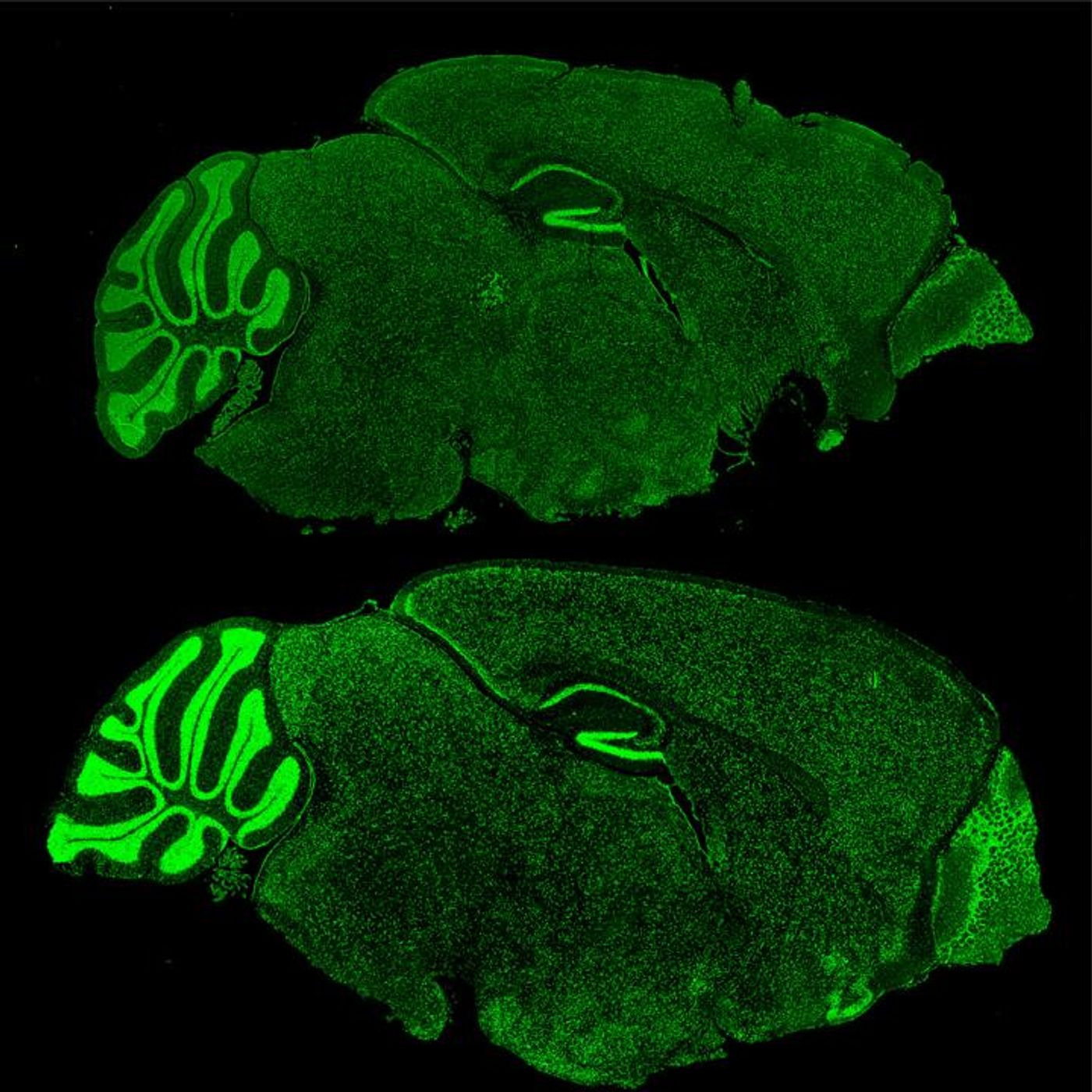Potential Treatment for Fragile X Syndrome ID'ed
Mutations in one gene cause fragile X syndrome, which is the most common genetic form of autism and intellectual disability; it is further described in the video. New work by researchers at Rockefeller University has opened up a potential therapeutic avenue for the disorder; they have revealed that blocking a type of regulatory protein impacts the complex mechanisms that cause the disease.
Reporting in Cell, the investigators have found that targeting chromatin remodelers relieved symptoms of the disease in an animal model. Chromatin remodelers act to modify DNA with chemical tags, which means they affect how many different genes are expressed. It is very likely that chromatin remodeling proteins have a role in fragile X syndrome.
"Drugs that target chromatin remodelers are already in clinical trials to treat cancers like leukemia," said study author Erica Korb, a postdoctoral researcher at Rockefeller. "It is an attractive approach because a single inhibitor allows you to target a whole network of genes at once."
It has been known for awhile that defects in the FMRP gene cause Fragile X Syndrome, but it was not known how. A breakthrough happened in 2011; Rockefeller's Robert B. Darnell, Robert and Harriet Heilbrunn Professor and a Howard Hughes Medical Institute Investigator, found hundreds of cellular signals that were linked to FMRP. These signals were mRNAs that act as intermediaries between genes and proteins to be synthesized; they encoded for proteins that function at the synapse of neurons, where two nerve cells meet and exchange chemical information.
It was found that typically, the FMRP protein acts to inhibit the mRNAs, binding to them, so they do not become proteins. But in fragile X syndrome patients, the FMRP is defective and cannot stop the production of new proteins from the mRNAs, which raises the cellular levels of synaptic proteins.
"The results made sense; this is a neurological disorder and we see an effect on proteins involved with neural function," Darnell explained.
That sent doctors and scientists scrambling to find compounds that could interfere with the synaptic proteins to compensate for the defective FMRP. Clinical trials were a disappointment, however. There was likely more to the story.
Korb collaborated with Darnell and David Allis, the Head of Rockefeller's Laboratory of Chromatin Biology and Epigenetics, to reassess the first data set. Chromatin remodelers were found to form another class of cellular signals that were significantly linked to FMRP. Korb and her team created cells lacking FMRP; they saw an increase in the cellular levels of certain chromatin remodeling proteins. The levels of synaptic proteins in the cells were subsequently raised.
Cancer biologists have established a way to inhibit the chromatin remodeling protein, Brd4, so the scientists tried it. "The results were exciting. In cellular and animal models of Fragile X Syndrome, we saw a return to normal numbers of neuronal synapses and a decrease in behavioral symptoms," Korb revealed.
Chromatin remodeling proteins have been implicated in some types of autism, and inhibitors of these proteins may be a new kind of therapeutic for autism spectrum disorders as well as fragile X syndrome. The research also shows how redundancy in the cell gives rise to complex networks that function to regulate gene expression and by extension, human health and behavior.
Sources: AAAS/Eurekalert! Via Rockefeller University, Cell









